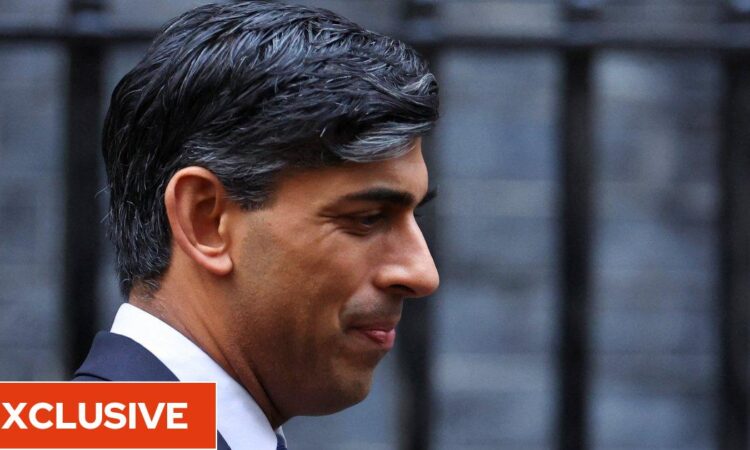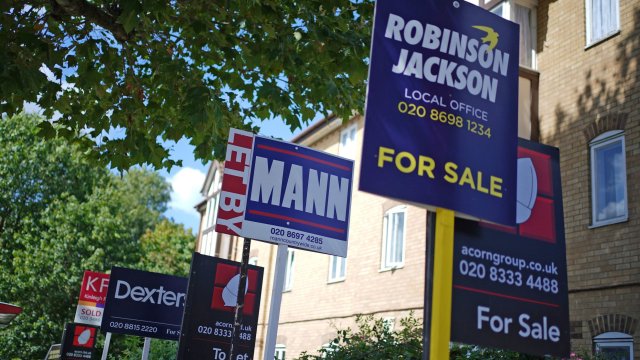
Millions more people face being hit by higher mortgage costs with more than one in five fixed rate deals coming up for renewal next year, official statistics have revealed.
With the energy price cap also increasing from January, living standards will continue to be squeezed despite the fall in inflation, the UK’s budget watchdog warned.
The data analysed by i suggest that Rishi Sunak will face a challenge in his bid to convince voters that the economy is improving ahead of the general election.
The most recent available figures from the Financial Conduct Authority (FCA) show that at least 1.54 million fixed rate mortgage deals will expire over the course of 2024 – more than 20 per cent of the outstanding number of fixed rate mortgages and around 15 per cent of all mortgages.
These will all have been fixed at a time when interest rates were significantly lower than they are now, meaning the borrowers are almost certain to have to pay a higher rate.
Insiders at the Office for Budget Responsibility (OBR) have warned that concerns are growing that the full extent of the real-world impact of the Bank of England increasing interest rates had not yet been felt due to the high number of households that have not yet remortgaged.
A senior source at the OBR, which produces its own forecasts and analyses the effects of Treasury decisions, said that millions of households are due to face a significant rise in their mortgage costs as their deals expire, partly due to the increasing popularity of fixed rate deals rather than variable mortgages compared to previous decades.
The source told i: “We think that higher mortgage interest payments will continue to weigh on household disposable income for longer than we expected back in March.”
Although lenders have been offering a growing number of deals in a rate war aimed at stimulating the flagging housing market, the current average two-year fix is still 5.98 per cent, compared to 2.34 per cent in December 2021. This is an increase of £405 per month on a mortgage of £200,000.
The OBR has forecast that the average interest rate paid on all mortgages will not peak for nearly four more years, statistics buried in the small print of the recent Autumn Statement show.
The average borrower is paying just over 3 per cent but that will continue to rise, reaching 5 per cent in the third quarter of 2027, the OBR believes.
At least another million fixed rate mortgages are due to expire in 2025, according to the FCA data.
This is on top of the 680,000 households already on variable rates who are currently paying a record high average of 8.19 per cent.
While the majority of people will be remortgaging to another fixed rate mortgage, some are opting to move on to a variable rate in the hope that rates will fall or because their financial situation has changed, so they can’t meet the affordability criteria to remortgage to a new fix.
Bank of England Governor Andrew Bailey this week indicated rates could increase further next year, saying: “I don’t think that we can say definitively that interest rates have peaked.”
Richard Hughes, the head of the OBR, recently told MPs in a Treasury committee hearing: “Another thing that squeezes living standards in our forecast is the fact that more people are rolling off that fixed rate portion of their mortgage and rolling on to a much higher variable rate, so in addition to having inflation outstrip their earnings for a further period, they also have higher mortgage payments on the variable rate.
“It takes until the end of our forecast, which is 2027-28, for real living standards to recover to pre-pandemic level.”
Markets expect that the Bank will start cutting rates some time in the summer, which would potentially be a boost for the Government in an autumn general election.
But the OBR and FCA data suggest that it will take many more months for most individuals to benefit from lower rates.
How rates have risen
By Callum Mason
Back in December 2021, the average two-year fixed mortgage rate was 2.34 per cent, while on a five-year fix, the rate was 2.64 per cent.
Today, the average two-year fixed rate is 5.98 per cent, and for five-year fixes, it’s 5.58 per cent.
This means that someone taking out a two-year fixed mortgage worth £200,000 over 25 years today would pay £1,287 per month. Whereas two years ago, they would have paid £882 per month – £405 per month less.
Someone taking out a five-year fixed mortgage worth £200,000 over 25 years today would pay £1,237 per month. Whereas two years ago, they would have paid £911 per month – £328 per month less
Although rates are still significantly higher than they were two years ago, they have started to fall from their peak this summer. Back at the start of August, the average two-year fixed mortgage was 6.85 per cent, and the average five-year fix was 6.37 per cent.
Even though the Bank of England held its base rate at 5.25 per cent once again on Thursday, brokers have said that a mortgage “rate war” is on a “rolling boil,” as lenders rush to try and secure business by offering competitive rates.
HSBC, Nationwide, TSB and Virgin Money have all cut rates in the past week, now offering deals as low as 4.29 per cent.
Economists generally expect that the Bank of England base rate has hit its peak, and experts are now hoping a mortgage deal below 4 per cent – albeit only for those with high amounts of equity in their home – could be available soon, as financial markets have dropped the rates used to finance home loans.







